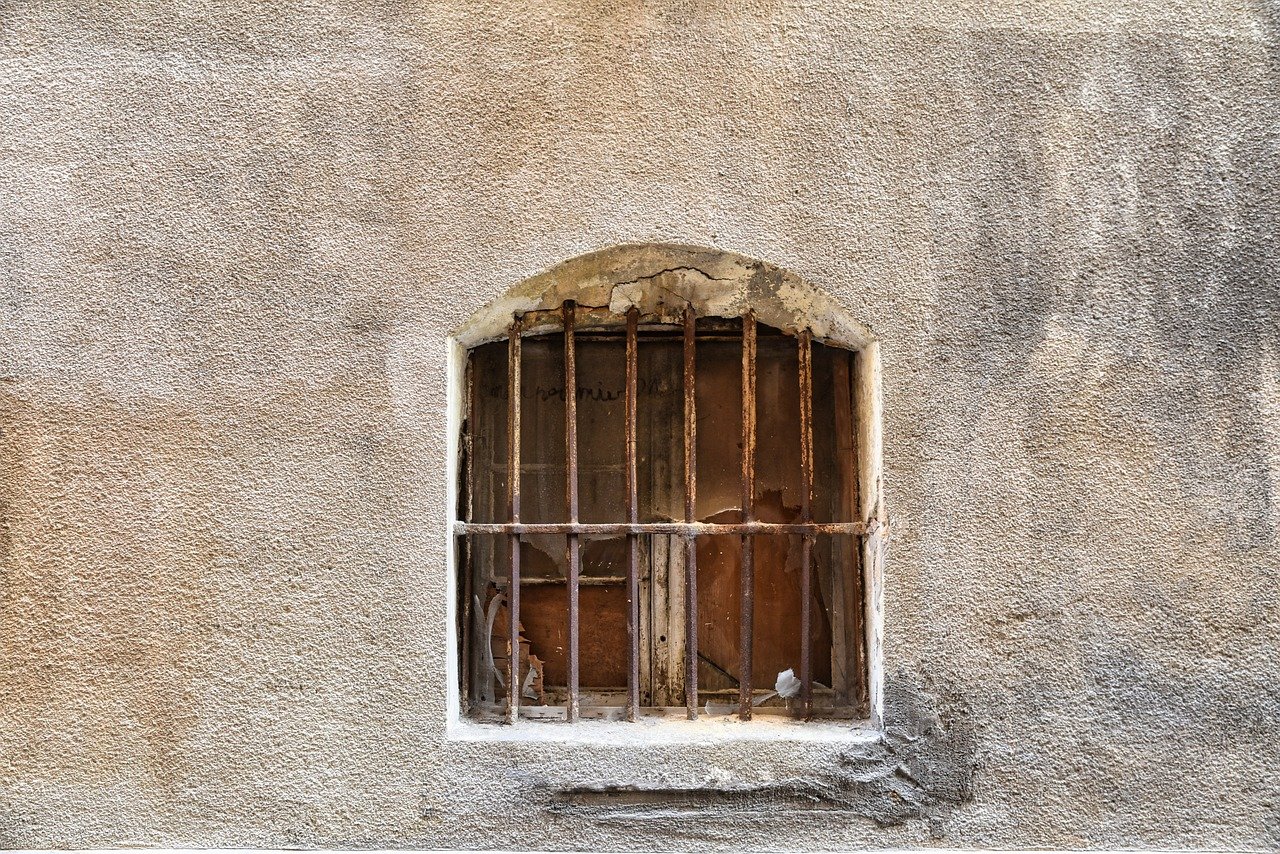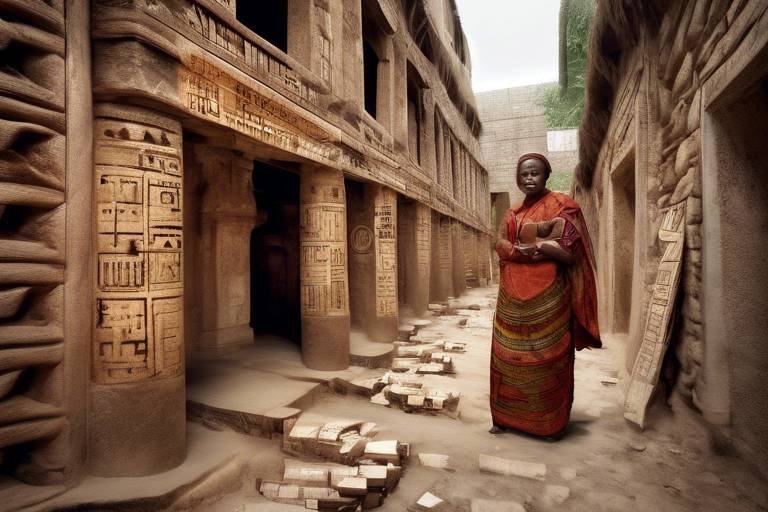The Role of Education in Heritage Preservation
Education plays a vital role in the preservation of heritage by serving as a cornerstone for raising awareness, instilling appreciation, and passing down traditional knowledge to future generations. Through educational initiatives, individuals are equipped with the necessary tools to understand, value, and safeguard cultural heritage for the benefit of society as a whole.

Importance of Cultural Education
Education plays a crucial role in heritage preservation by raising awareness, fostering appreciation, and passing down traditional knowledge. This article explores how educational initiatives contribute to the conservation and promotion of cultural heritage for future generations.
Cultural education instills a sense of pride and identity, encouraging communities to value and protect their heritage sites and practices. It provides a platform for understanding the significance of preserving cultural traditions for posterity.
Integrating heritage conservation into school curricula helps students develop a deep connection to their cultural roots. Through interactive activities and field trips, young learners can actively engage in the preservation of heritage sites.
Museums and cultural institutions serve as educational hubs, offering exhibits and programs that educate the public about the importance of heritage preservation. They play a vital role in promoting cultural awareness and appreciation.
Engaging local communities in heritage education initiatives fosters a sense of ownership and responsibility towards preserving cultural assets. Community-led projects empower individuals to become stewards of their heritage.
Incorporating technology, such as virtual tours and interactive learning tools, enhances heritage education by making it more accessible and engaging. Digital platforms provide innovative ways to explore and learn about cultural heritage.
Despite its importance, heritage education faces challenges such as funding constraints, lack of curriculum integration, and limited resources. Overcoming these obstacles is crucial to ensuring the sustainability of heritage preservation efforts.
Heritage education is a global concern, with countries around the world implementing strategies to safeguard their cultural heritage. Sharing best practices and collaborating internationally can enhance the effectiveness of heritage education programs.
Looking ahead, the future of heritage education lies in promoting inclusivity, diversity, and sustainability. By embracing innovative approaches and fostering partnerships, education can continue to play a vital role in preserving our shared heritage.
Q: How can individuals contribute to heritage preservation?
A: Individuals can contribute by participating in community-led projects, supporting cultural institutions, and advocating for heritage conservation policies.
Q: What role does technology play in heritage education?
A: Technology enhances heritage education through digital platforms, virtual tours, and interactive learning tools, making cultural heritage more accessible and engaging for learners of all ages.
Q: Why is cultural education important for future generations?
A: Cultural education instills a sense of identity and pride, fostering a deeper appreciation for heritage sites and traditions, ensuring their preservation for future generations to cherish.

Heritage Conservation Through School Programs
Educational institutions play a pivotal role in heritage conservation by integrating cultural education into their curriculum. By incorporating heritage conservation into school programs, students are exposed to the importance of preserving cultural traditions from a young age. Through interactive activities, such as visits to heritage sites and hands-on projects, students develop a deep appreciation for their cultural heritage.
Furthermore, school programs focused on heritage conservation not only educate students about the significance of cultural preservation but also instill a sense of responsibility towards safeguarding their heritage for future generations. By actively involving students in heritage conservation efforts, schools nurture a generation of individuals who value and actively contribute to the protection of cultural assets.
Moreover, heritage conservation through school programs serves as a bridge between the past and the present, allowing students to connect with their roots and understand the historical significance of cultural practices. By immersing students in their cultural heritage, schools create a sense of pride and identity, fostering a strong bond between individuals and their heritage.

Role of Museums and Cultural Institutions
Education plays a crucial role in heritage preservation by raising awareness, fostering appreciation, and passing down traditional knowledge. This article explores how educational initiatives contribute to the conservation and promotion of cultural heritage for future generations.
Cultural education instills a sense of pride and identity, encouraging communities to value and protect their heritage sites and practices. It provides a platform for understanding the significance of preserving cultural traditions for posterity.
Integrating heritage conservation into school curricula helps students develop a deep connection to their cultural roots. Through interactive activities and field trips, young learners can actively engage in the preservation of heritage sites.
Museums and cultural institutions serve as educational hubs, offering exhibits and programs that educate the public about the importance of heritage preservation. They play a vital role in promoting cultural awareness and appreciation.
Engaging local communities in heritage education initiatives fosters a sense of ownership and responsibility towards preserving cultural assets. Community-led projects empower individuals to become stewards of their heritage.
Incorporating technology, such as virtual tours and interactive learning tools, enhances heritage education by making it more accessible and engaging. Digital platforms provide innovative ways to explore and learn about cultural heritage.
Despite its importance, heritage education faces challenges such as funding constraints, lack of curriculum integration, and limited resources. Overcoming these obstacles is crucial to ensuring the sustainability of heritage preservation efforts.
Heritage education is a global concern, with countries around the world implementing strategies to safeguard their cultural heritage. Sharing best practices and collaborating internationally can enhance the effectiveness of heritage education programs.
Looking ahead, the future of heritage education lies in promoting inclusivity, diversity, and sustainability. By embracing innovative approaches and fostering partnerships, education can continue to play a vital role in preserving our shared heritage.
Q: Why is heritage education important?
A: Heritage education is important as it helps individuals understand and appreciate their cultural roots, fostering a sense of identity and pride.
Q: How can technology enhance heritage education?
A: Technology can enhance heritage education by providing interactive learning experiences, virtual tours of heritage sites, and access to digital archives.
Q: What are some challenges faced in heritage education?
A: Challenges in heritage education include funding limitations, lack of curriculum integration, and the need for increased resources and support.
Q: How can communities get involved in heritage preservation?
A: Communities can get involved in heritage preservation through participation in local projects, volunteering at heritage sites, and advocating for the protection of cultural assets.

Community Involvement in Heritage Education
Community involvement is a cornerstone of heritage education, fostering a sense of belonging and responsibility within local populations. When communities actively participate in heritage education initiatives, they become more invested in the preservation of their cultural assets. By engaging community members in hands-on projects and workshops, a deeper connection to heritage is established, leading to a greater appreciation for the value of cultural traditions.
One effective way to involve communities in heritage education is through collaborative events and festivals that showcase traditional practices and customs. These events not only educate the public about the significance of cultural heritage but also create opportunities for intergenerational learning and knowledge sharing. By celebrating heritage through communal activities, communities can strengthen their bonds and promote a sense of unity.
Moreover, community-led conservation projects play a vital role in safeguarding heritage sites and practices. When local residents take ownership of preserving their cultural heritage, they become active participants in its protection and promotion. By empowering individuals to take responsibility for heritage conservation, community involvement ensures the sustainability of cultural assets for future generations.

Technology and Heritage Education
Technology plays a pivotal role in enhancing heritage education by leveraging innovative tools and platforms to engage learners in a dynamic way. Through the integration of digital resources, such as virtual tours and interactive applications, students can immerse themselves in the rich history and cultural significance of heritage sites.
Virtual tours offer a unique opportunity for individuals to explore historical landmarks and artifacts from anywhere in the world, breaking down geographical barriers and allowing for a more inclusive learning experience. By incorporating multimedia elements, such as videos and 3D models, technology transforms traditional education into a captivating journey through time.
Interactive learning tools, such as educational apps and online quizzes, make heritage education more accessible and interactive, catering to diverse learning styles and preferences. These digital resources not only educate but also inspire curiosity and appreciation for cultural heritage, fostering a deeper connection between individuals and their shared past.
Furthermore, technology enables real-time collaboration and knowledge sharing among students, educators, and heritage experts, creating a global network of individuals dedicated to preserving and promoting cultural heritage. By harnessing the power of digital platforms, heritage education transcends boundaries and empowers communities to safeguard their collective heritage for future generations.

Challenges in Heritage Education
Education plays a crucial role in heritage preservation by raising awareness, fostering appreciation, and passing down traditional knowledge. This article explores how educational initiatives contribute to the conservation and promotion of cultural heritage for future generations.
Cultural education instills a sense of pride and identity, encouraging communities to value and protect their heritage sites and practices. It provides a platform for understanding the significance of preserving cultural traditions for posterity.
Integrating heritage conservation into school curricula helps students develop a deep connection to their cultural roots. Through interactive activities and field trips, young learners can actively engage in the preservation of heritage sites.
Museums and cultural institutions serve as educational hubs, offering exhibits and programs that educate the public about the importance of heritage preservation. They play a vital role in promoting cultural awareness and appreciation.
Engaging local communities in heritage education initiatives fosters a sense of ownership and responsibility towards preserving cultural assets. Community-led projects empower individuals to become stewards of their heritage.
Incorporating technology, such as virtual tours and interactive learning tools, enhances heritage education by making it more accessible and engaging. Digital platforms provide innovative ways to explore and learn about cultural heritage.
Heritage education faces various challenges that hinder its effectiveness. These challenges include funding constraints, which limit the resources available for heritage education programs. Additionally, the lack of integration of heritage topics into school curricula poses a barrier to raising awareness about cultural preservation among students. Overcoming these obstacles is essential to ensure the sustainability of heritage preservation efforts.
Heritage education is a global concern, with countries worldwide implementing strategies to safeguard their cultural heritage. Sharing best practices and collaborating internationally can enhance the effectiveness of heritage education programs.
Looking ahead, the future of heritage education lies in promoting inclusivity, diversity, and sustainability. By embracing innovative approaches and fostering partnerships, education can continue to play a vital role in preserving our shared heritage.

Global Perspectives on Heritage Education
When it comes to heritage education, the global perspective highlights the shared commitment of nations worldwide to safeguard and promote their cultural legacies. Countries across the globe are recognizing the significance of preserving their heritage for future generations and are implementing various strategies to achieve this goal.
Through international collaborations and knowledge sharing, best practices in heritage education are being exchanged to enhance the effectiveness of conservation efforts. By learning from each other's experiences and successes, countries can strengthen their heritage education programs and ensure the protection of their cultural treasures.
Global perspectives on heritage education also emphasize the importance of inclusivity and diversity in preserving cultural heritage. Recognizing and celebrating the richness of different cultural traditions and practices not only enriches educational initiatives but also fosters a sense of unity and mutual respect among diverse communities.
Furthermore, the global community is increasingly embracing sustainable practices in heritage preservation. By integrating environmentally friendly approaches and promoting sustainable tourism, countries can ensure the long-term conservation of their heritage sites while minimizing negative impacts on the environment.
In summary, the global perspective on heritage education underscores the interconnectedness of cultural heritage across borders and the collective responsibility of nations to protect and promote their shared legacies for the benefit of present and future generations.

Future Directions in Heritage Education
The future of heritage education is a dynamic landscape that calls for inclusivity, diversity, and sustainability. As we move forward, it is essential to embrace innovative approaches that cater to a wide range of audiences. By promoting inclusivity, heritage education can reach individuals from diverse backgrounds, ensuring that everyone has the opportunity to engage with and appreciate cultural heritage.
Moreover, diversity in heritage education is key to representing the richness and complexity of our shared heritage. By incorporating various perspectives, traditions, and narratives, education can offer a more comprehensive understanding of cultural heritage, allowing for a more holistic approach to preservation and promotion.
Sustainability also plays a crucial role in the future of heritage education. It is essential to develop strategies that ensure the long-term conservation of heritage sites and practices. By fostering partnerships with local communities, governments, and organizations, education can work towards creating a sustainable framework for heritage preservation.
Furthermore, embracing technology and digital platforms can enhance the accessibility and reach of heritage education initiatives. Virtual tours, interactive learning tools, and online resources offer innovative ways to engage with cultural heritage, making it more engaging and interactive for learners of all ages.
In conclusion, the future of heritage education lies in promoting inclusivity, diversity, and sustainability while leveraging technology to enhance learning experiences. By adopting a forward-thinking approach and collaborating across sectors, education can continue to play a vital role in preserving our cultural heritage for future generations.
Frequently Asked Questions
- What is the significance of cultural education in heritage preservation?
Cultural education plays a vital role in heritage preservation by instilling a sense of pride and identity in communities, encouraging them to value and protect their cultural heritage. It helps individuals understand the importance of preserving cultural traditions for future generations.
- How do school programs contribute to heritage conservation?
School programs that integrate heritage conservation into their curricula help students develop a strong connection to their cultural roots. Through interactive activities and field trips, students actively engage in preserving heritage sites, fostering a deeper appreciation for their cultural heritage.
- What role do museums and cultural institutions play in heritage education?
Museums and cultural institutions serve as educational hubs, offering exhibits and programs that educate the public about the importance of heritage preservation. They play a crucial role in promoting cultural awareness, appreciation, and understanding of our shared heritage.
- How can technology enhance heritage education?
Technology, such as virtual tours and interactive learning tools, enhances heritage education by making it more accessible and engaging. Digital platforms provide innovative ways to explore and learn about cultural heritage, reaching a wider audience and fostering interest in heritage preservation.
- What are the challenges faced by heritage education initiatives?
Heritage education faces challenges such as funding constraints, lack of curriculum integration, and limited resources. Overcoming these obstacles is crucial to ensuring the sustainability of heritage preservation efforts and promoting the importance of cultural heritage.



















